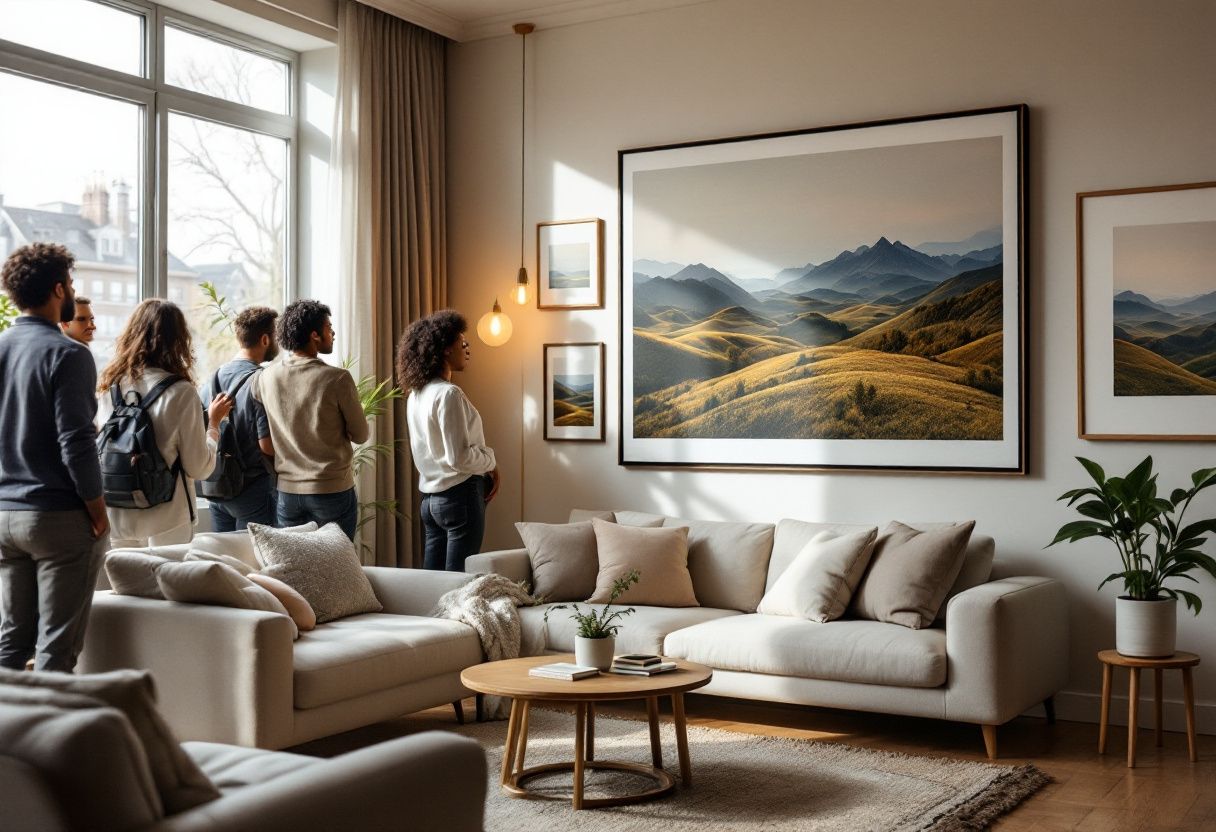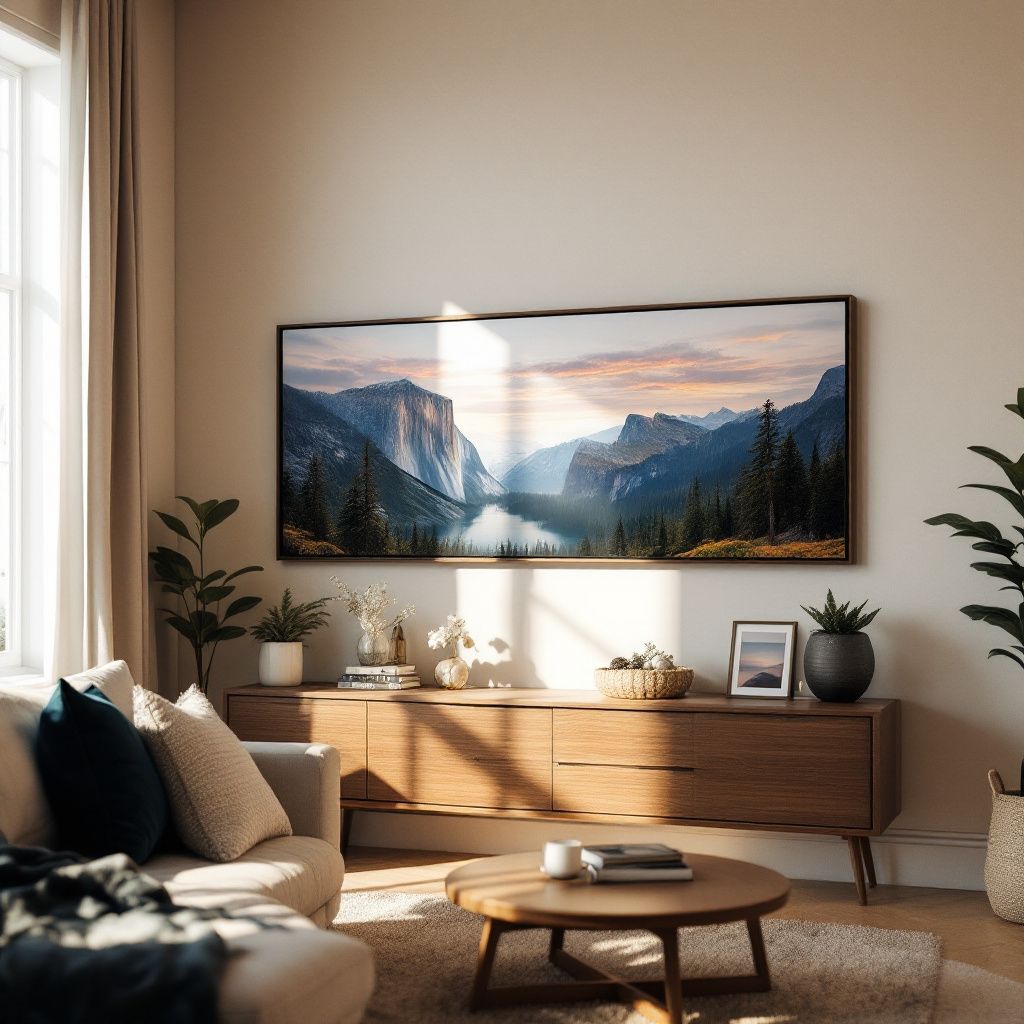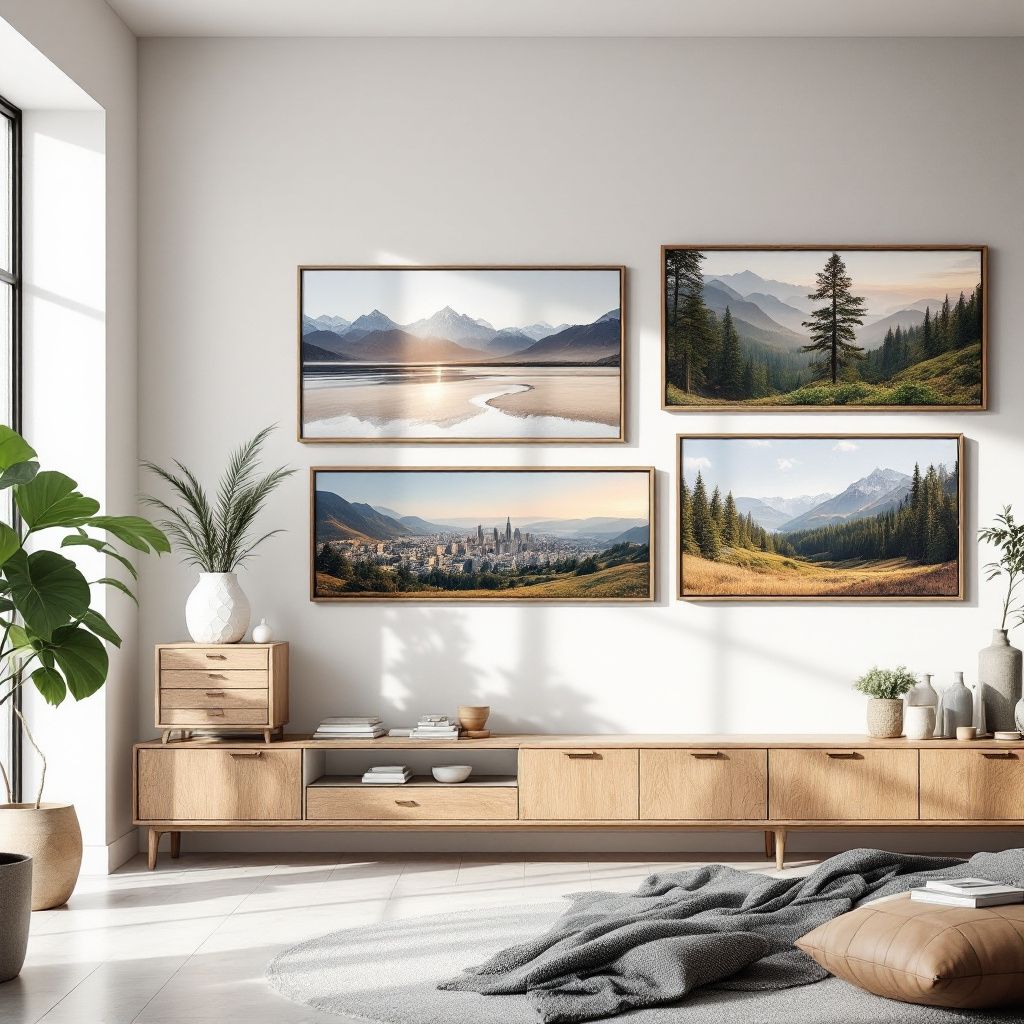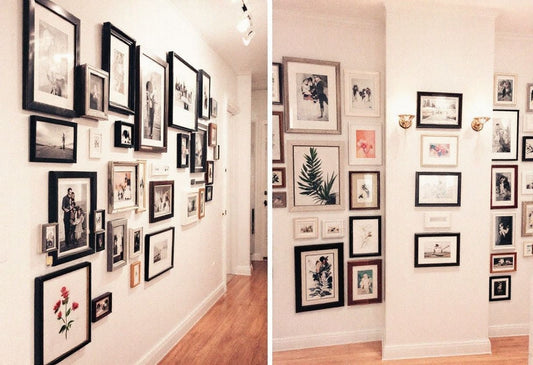
Understanding Panoramic Photos
Before diving into framing, it’s essential to grasp what makes panoramic photos different from standard photos.
-
Aspect Ratio: Panoramic photos usually have a much wider aspect ratio than traditional photos. While standard photos could be 4:3 or 16:9, panoramas often reach ratios like 2:1 or even 3:1.
-
Subject Matter: Panoramas commonly feature expansive scenes such as wide landscapes, city horizons, or large group photos, where the goal is to tell a story of breadth and scope with a single image.
Knowing how panoramas differ from typical dimensions is crucial for framing decisions. Let's explore options for frames that match the panoramic aspect while retaining the photo's stunning visual impact.

Why Choosing the Right Frame Matters <--
Framing isn’t just about aesthetics—especially for panoramic shots. The right scenic framing highlights the image's vastness, enhances its details, and draws the viewer’s attention to its subject. Proper framing also ensures long-term preservation and protects the photo from damage like warping or fading over time.
Benefits of Proper Scenic Framing for Panoramic Photos:
-
Protection from environmental elements (dust, UV light)
-
Aesthetic matching with home décor or space themes
-
Enhanced focus on the panoramic view, without distractions
By carefully selecting your panoramic frame, you add an extra element to your image while protecting its vitality for years to come. Check out a few frames that fit this design perfectly on our website here.

How to Choose the Best Panoramic Frames
Now that we’ve highlighted why framing is essential, here are key factors you should consider when choosing panoramic frames to show off your photos.
1. Size and Proportion
The first crucial aspect when choosing a panoramic frame is size. Ensuring the frame's size pairs well with your photo keeps its dimensions intact and offers balance on the wall of your space.
-
Width Matters: Wider photos need a sturdier frame structure to maintain integrity—going too thin on the frame could make the photo seem overwhelmed or unsupported.
-
Matching Ratio: Ensure the frame and the mat (if used) complement the image’s wide aspect ratio. If necessary, custom-made frames are always an option for very specific photo alignments.
Consider custom solutions when shopping for panoramic frames.
2. Material Options to Match the Scene
The material of the frame should complement the scene depicted in the photo. For example:
-
Wooden Frames: Ideal for nature-themed panoramas (think beaches, mountains, or forests). The earthy tones and textures of wood are usually a great match.
-
Metal Frames: A sleek option that works well with cityscapes or modern architectural photos. The minimalist look of metal framing adds a professional touch.
-
Canvas Wraps: This frameless option offers a minimalistic approach. Canvas wraps eliminate the "border" altogether, putting 100% of the focus on the panoramic photo for a more dramatic presentation.
By using materials that align with the essence of the image, the frame enhances the aesthetic while keeping attention on the photo's detail.
3. Don’t Forget About Matting
Matting adds breathing room between the photo and the frame itself. It’s an optional feature, but when used appropriately, matting enhances the panoramic photo by creating a buffer space, helping the eye focus on the image’s depth and dimensions.
-
Neutral Colors: White or off-white matting will almost always work well with panoramic photos. Neutral shades won’t compete with the visual weight of the landscape.
-
Contrasting Colors: Think about using muted colors that offer a subtle contrast to enhance the photo’s subject. Darker greys or earthy reds can make the photo "pop."
Remember: The matting shouldn’t overwhelm the picture, so always err on the side of subtlety in color choice.
4. Consider Anti-Glare or UV Glass
Because panoramic photos tend to be larger and often displayed in prominent parts of a home or office, it’s worth protecting your investment. Protective glass offers significant advantages:
-
Anti-Glare Glass: If you'll be hanging your panoramic frame near lighting sources or windows, opting for anti-glare glass reduces light reflections and lets viewers appreciate every detail.
-
UV-Filtering Glass: UV light can degrade the quality of your panoramic photo over time, causing discoloration or fading. High-end glass options with UV protection ensure the longevity and vibrancy of your image.
For a low-frills option, consider acrylic instead of glass, which is shatter-resistant and can also offer a level of glare reduction.
5. Frame Style and Design
The framing style itself will drastically affect how your panoramic photo looks on a wall. Common framing styles for panoramas include:
-
Simple, Thin Borders: If the image is already bold and speaks for itself, consider using a slim, minimalist frame that ensures the picture remains the primary focus.
-
Bold, Wide Frames: Where the wall space is large and the photo is smaller, a thick frame can add visual weight and draw attention where it otherwise might seem too understated.
-
Frameless (Canvas Printing): Modern and minimalist, wrapping your panoramic photo on canvas adds texture while keeping things sleek and display-ready.
Every space has its own personality—make sure the frame you choose enhances it rather than clashing. Be sure to check out some of our canvas print framing options on Text To Frame It if you're after a frameless look!
Displaying Your Panoramic Photo
The way you display your panoramic frame can intensify its effect on a viewer. Here are a few tips for showcasing your new frame:
1. Optimal Hanging Position
-
Eye-Level Display: As a general rule, hang panoramic photos at eye level, roughly 57-60 inches from the floor to the center of the frame. This enables everyone to comfortably appreciate the scene without strain.
-
Horizontal or Vertical Orientation: Depending on how your room is designed, horizontally positioning your frame will give that traditional panoramic display. However, a vertically oriented frame can be a unique way to display city skyline shots for an edgier look.
2. Consider Surrounding Décor
Whether you’re hanging a panoramic landscape or cityscape, it’s worth considering the room’s overall theme. Neutral-toned rooms are perfect for nature panoramics. Urban-style interiors will pair nicely with metal frames and abstract city photography.
3. The Power of Grouping
If you’ve taken multiple panoramic shots on your trips, don’t be afraid to group them together in a gallery wall style. Just make sure they complement each other. Grouping different panoramas can create an immersive environment that showcases your photography talents across landscapes and geographies.
Conclusion
Selecting panoramic frames is as much about complementing the photo as it is about enhancing the feel of the space you display it in. From size, material, and style to protection through matting and glass, choosing the right frame ensures that your photo is set up for longevity and visual appeal.
Ready to frame your favorite panorama? Our simple service at Text To Frame It makes the process as easy as texting the image to us and choosing how you want it framed. You'll be on your way to displaying your panoramic masterpiece in no time!



